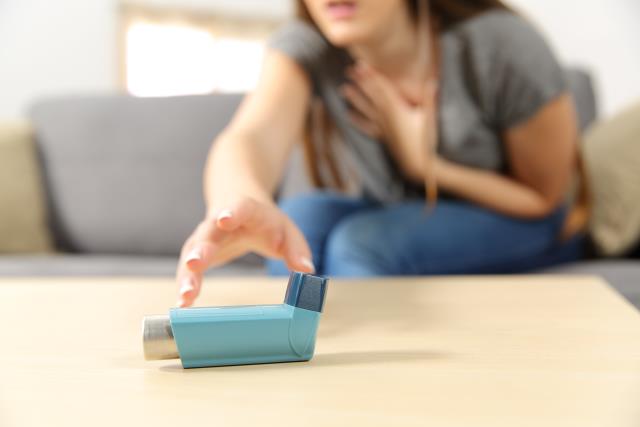
As the solar wind moves away from the Sun, it cools slower than expected and accelerates. Where the energy that powers this phenomenon comes from has long been unknown. NASA’s Parker Solar Probe and the European Space Agency’s (ESA) Solar Orbiter, when they coincidentally lined up to observe the same solar wind stream, provided scientists with the measurements needed to answer this question.
The solar wind is a stream of charged particles, or plasma, expelled from the Sun’s atmosphere. As these streams expand into space, they are expected to cool down in the same way expanding gasses decrease in temperature, but this cooling happens more slowly than expected. Moreover, the streams also increase in speed as they move away from the Sun.

Scientists must study the same stream at different distances from the sun to determine the energy source behind this heating and acceleration. However, these studies require the trajectories of multiple spacecraft to align perfectly with a single stream. These alignments are rare, so previous studies have been limited by a lack of data on individual streams over large distances.
“We didn’t initially realize that Parker and Solar Orbiter were measuring the same thing at all. Parker saw this slower plasma near the Sun that was full of switchback waves, and then Solar Orbiter recorded a fast stream which had received heat and with very little wave activity,” said author Samuel Badman of the Center for Astrophysics | Harvard & Smithsonian, Massachusetts. “When we connected the two, that was a real eureka moment.
” Parker Solar Probe crossed this stream on Feb. 25, 2022, and Solar Orbiter entered the stream roughly 40 hours later and took eight hours to cross it. The team estimates that the plasma in the stream took 45 hours to cross the distance between the two spacecraft, implying that they measured the same part of the particle stream.
Infographic depicting the solar wind being observed by Parker Solar Probe and Solar Orbiter. (Credit: ESA) The scientists compared the magnetic properties and Helium content of the plasma measured by both spacecraft. These properties are not expected to change after leaving the Solar atmosphere, or corona.
Both spacecraft returned similar measurements, confirming that Parker Solar Probe and Solar Orbiter encountered the same stream. The probes did not encounter the same conditions despite passing through the same solar wind. When Parker measured the stream, it had a speed of 386 km/s but by the time it reached Solar Orbiter, it had accelerated to 512 km/s and cooled down substantially.
Another way the winds measured by Parker Solar Probe and Solar Orbiter differed, was the proportion of energy stored in magnetic waves. These so-called Alfvén waves travel along the magnetic field and transport energy through plasma. Parker measured a lot more of this magnetic energy — or wave energy flux — than Solar Orbiter.
The team calculated the total amount of energy in the solar wind and compared the readings of both spacecraft with and without the magnetic energy. “We found that if we didn’t include the wave energy flux at Parker, we don’t quite match how much energy we have at Solar Orbiter,” said Badman. This led the scientists to conclude that the magnetic energy from these Alfvén waves must be the source of energy that accelerates the plasma and slows its cooling.
“Before this work, Alfvén waves had been suggested as a potential energy source, but we didn’t have definitive proof,” said author Yeimy Rivera from the Center for Astrophysics, who co-led this study with Badman. “This work was only possible because of the very special alignment of the two spacecraft that sampled the same solar wind stream at different stages of its journey from the Sun.” Panel A shows the positions of Parker Solar Probe and Solar Orbiter in a solar-corotating reference frame.
Panel B shows the longitude and latitude. Colors show the measured solar wind speed. (Credit: Rivera et al.
) Parker Solar Probe encountered the solar wind at a distance of 13.3 solar radii or 9 million km to the Sun, barely outside the Sun’s corona. Since its launch in 2018, it has come closer to the Sun than any other mission.
In 2021, Parker became the first spacecraft to fly through the corona. At its close distance to the Sun, Parker Solar Probe has detected a type of Alfvén waves, called switchbacks. These are rapid changes in the direction of the solar wind’s magnetic field and sometimes occur in patches.
These patches also showed up in Parker’s measurements for this study. “This discovery is one of the key puzzle pieces to answer the 50-year-old question of how the solar wind is accelerated and heated in the innermost portions of the heliosphere, bringing us closer to closure to one of the main science objectives of the Parker Solar Probe mission,” said Adam Szabo, Parker Solar Probe mission science lead at NASA. Solar Orbiter is located farther from the Sun than Parker in an elliptical orbit that takes the spacecraft within the orbit of Mercury.
It crossed the plasma stream observed in this study at 127.7 solar radii or 89 million km from the Sun, which is between the orbits of Mercury and Venus. “This new work expertly brings together some large pieces of the solar puzzle,” said Daniel Müller, Solar Orbiter Project Scientist at ESA.
“More and more, the combination of data collected by Solar Orbiter, Parker Solar Probe, and other missions is showing us that different solar phenomena actually work together to build this extraordinary magnetic environment.” Rivera et al.’s study was published in the journal Science on Aug.
29. (Lead image: Artist’s impression of Solar Orbiter and Parker Solar Probe observing the Sun. Credit: Solar Orbiter: ESA/ATG medialab; Parker Solar Probe: NASA/Johns Hopkins APL).













